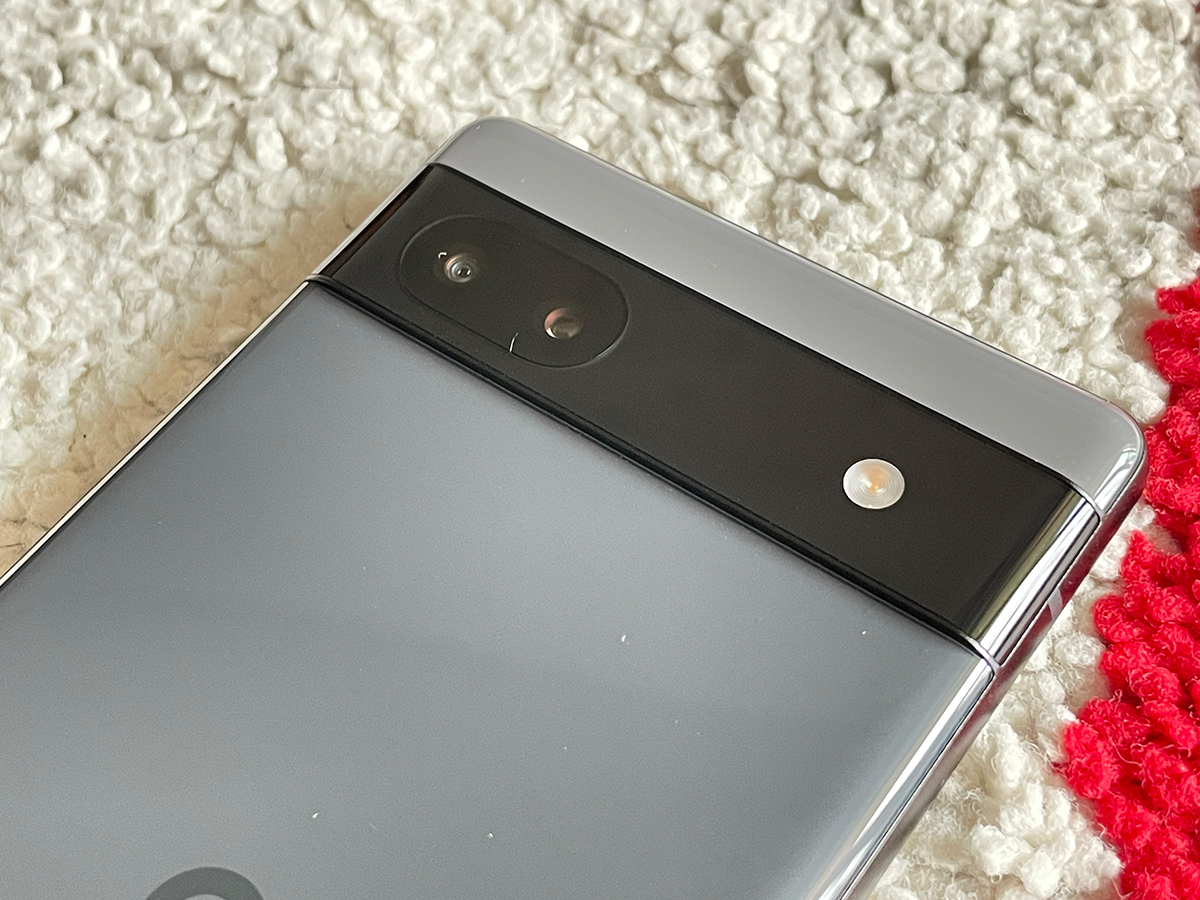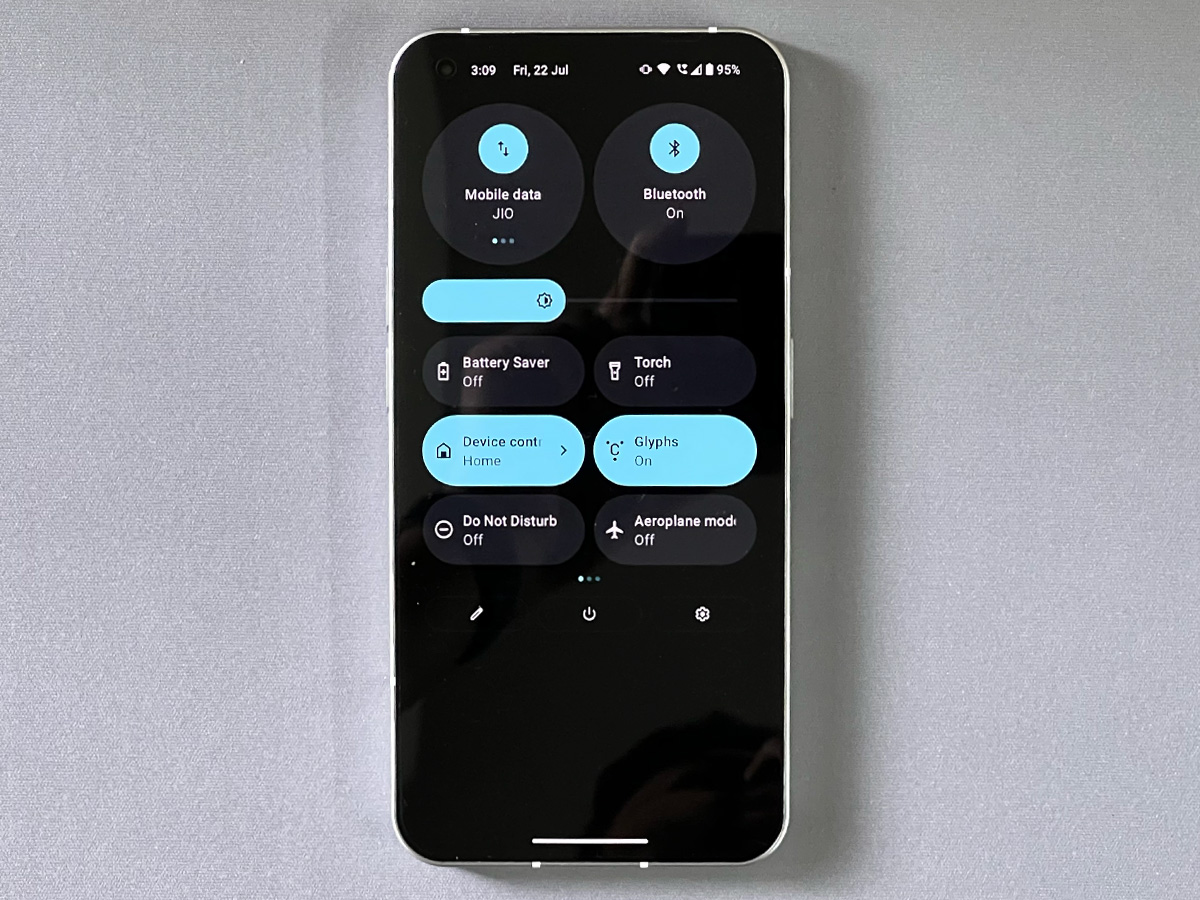Three of the best smartphones have entered the mid-range arena with their swords drawn in a battle to be the mid-range buyer’s best choice on the market. These Android smartphones come with their own stand-out features and flaws but in this cut-throat environment, we are stepping in to help you make a better, more informed decision while choosing what really matters to you in a smartphone.
Nothing Phone (1) vs Oppo Reno8 Pro vs Google Pixel 6a: Which is best?
Clash of the Titans

Screens: Big, Bigger, Biggest

When it comes to screens, Google’s affordable options stick to the path less travelled these days i.e small screen sizes. The Pixel stands at a reasonable 6.1in with a 2400×1080 resolution display with an 84.93% screen-to-body ratio. The FHD+ OLED display seems to be one of the best in terms of colour accuracy and saturation levels, courtesy of its AMOLED panel for unbeatable contrast.
Nothing, on the other hand, has gone slightly bigger with a 6.55in panel with the same 2400×1080 resolution OLED display with HDR10+ support. It sports a slightly bigger 85.8% screen-to-body ratio compared to the Pixel 6a. Although, the punch-hole camera has been moved to the upper left corner, rather than the centre like it is on the Pixel 6a and the Reno8 Pro.
Last, but most definitely not least, the Oppo Reno8 Pro sports a massive 6.7in AMOLED display with HDR10+ support. It has a 2412x 1080 resolution display with an impressive 93.4% screen-to-body ratio.
The real difference lies in the refresh rates. Google has gone pretty old-fashioned with the 60Hz panel for the Pixel 6a, which isn’t too surprising, given the more expensive Pixel 6 has a 90Hz panel. While the Reno 8Pro and Nothing have a 120Hz panel which provides a much smoother buttery experience.
Although on paper, the Oppo may be the stronger contender, it loses the top spot due to its lack of colour accuracy.
Verdict: Nothing Phone (1)
Design: Trim, Tough or Transparent

On the design front, all phones pull in different directions whilst staying true to their brand identity. However, they all look higher-end than their prices would suggest. Google has pretty much retained everything from the Pixel 6 and Pixel 6 Pro, sporting the same width-spanning camera bar on the back. The only major difference is the plastic back in place of the glass.
The Reno8 Pro is truly likeable with a slicker, more toned-down design as compared to the Nothing. It has a streamlined design around the camera bump with a smooth 75-degree micro-arc that blends the camera module with the rear panel (nothing too jarring). The metal sides in combination with the slick rear and the top glass make the phone comfortable and durable.
Well, the Nothing is pretty much nothing without its futuristic design. The front is dominated by the display with those slim bezels on all sides with enough precision to give butterflies to anyone with OCD. The rounded edges and the flat aluminium sides give off a very iPhone-like vibe, which is not a bad thing. But the real kicker is the rear of course. With a glass back, giving the illusion of looking right into the soul of the phone. While no circuitry is visible, you do however see the wireless charging coil. Complimenting this look are those captivating Glyph LED lights. For ingenuity alone, this one deserves this category.
Verdict: Nothing Phone (1)
Performance: It’s getting a bit Tensor

While all three devices run on Android 12, the phones all have different silicon powering them. The Pixel 6a uses a Google Tensor chip and the Nothing comes backed by a pretty mid-range Qualcomm Snapdragon 778G+ CPU, while the Reno8 uses Mediatek Dimensity 8100-Max.
The Pixel 6a handles your everyday tasks well but with heavy-duty games, it starts to struggle, whereas the Nothing can handle a bit more when it comes to load. But, the Oppo definitely takes this category, with its ability to keep things smooth even for your most unreasonable demands.
Verdict: Oppo Reno8 Pro
Camera: it’s all in the (algo)rithm

Nothing has stuck with the minimalist theme, opting against going for the fancy zoom, macro or monochrome lenses. Instead, you get a pair of 50MP primary with OIS and 50MP ultra wide-angle lenses. While both lenses take good photos when the lighting is good, you do see a drop in quality as it starts to get darker. The 16MP front camera too is just about good when clicking selfies in well-lit conditions.
The Oppo has packed in a MariSilicon NPU working in tandem with the MediaTek Dimensity 8100-MAX to process night-time videos with better portrait and HDR quality but still somehow manages to fall a bit short with low-light videography. This camera has also cut back on OIS which means these videos may have way too much shake and the end result is frankly, meh. The stills department is rather intriguing on the Oppo. The camera produces photos with a dramatic flair and the night mode is pretty solid too. However, everything is a bit inconsistent. You never know if you’ll get a good shot or a below-average photo.
The Pixel has made do with two 12MP sensors and manages to do more with less, taking pretty damn good images for such an affordable phone. It balances the colours well and manages to get in a good amount of detail with the correct exposure and sharpness. It’s a camera tool, to say the least, and also the best smartphone camera at this price point. The front camera too is particularly good at taking selfies even when the light is directly behind your face. The top-notch exposure control and facial brightness work particularly well with Indian skin too (we’ve had enough of the white-washing). All in all, it lives up to the Pixel standards and beats out the competition in this battle.
Verdict: Google Pixel 6a
Battery: Get supercharged

On paper, the Nothing Phone 1 and Reno8 Pro edge ahead of the Pixel 6a with their slightly bigger battery. They come with 4500mAh powerhouses, while the 6a makes do with 4410mAh. The Pixel’s Tensor CPU has higher power consumption than the Snapdragon 778G and the MediaTek 8100.
When it comes to picking between the evenly equipped Nothing and Oppo, it seems the Oppo can definitely survive more load and multi-tasking before it drains into those single digits. The Oppo also comes with 80W fast charging over the Nothing’s 33W fast charging. Oppo also says that the battery is TÜV Rheinland certified and the battery health can last up to 1,600 charging cycles charge without shortening its lifespan considerably. There’s also a Battery Health Engine built into the smartphone and its bundled charger for safer charging. That said, Nothing does have the advantage of wireless charging, so this one is quite close.
Verdict: Oppo Reno8 Pro
Operating System and features: What really counts

While the Pixel 6a is pretty standard, exactly what you’d expect from Google, it’s the other two that raise the eyebrows (in two very different ways).
Oppo is still jam-packed with annoying bloatware from its UI. Thankfully, you do have the option to uninstall the many apps that come preloaded, but it still strangely always pushes news into the notifications from the default browser app (without our consent). It’s still progress though. The default keyboard, Message and Phone apps are stock Android which is convenient as ever.
Contrastingly, the Android 12-based Nothing OS has taken a different approach. Some would even consider it ‘refreshingly vanilla’ while others feel it's too plain. Our experience though was rather pleasing with the custom fonts and icons maintaining the minimal ethos while still being a tad different. Nothing has also promised up to three years of software updates, and four years of security patches. They have already rolled out the first 100MB update. So all in all, pretty impressive.
Verdict: Nothing Phone (1)
Verdict: It’s all in on Nothing

All three smartphones are excellent but there can only be one winner. Quite, honestly, the target demographics of these smartphones are completely different. The Pixel 6a is a photography tool and a bloatware-free Android experience. Although Google has been struggling to keep its first-generation Google Tensor processor from sucking too much power, heating up easily and not hampering your life with bugs. Not to mention, you only get a 128GB storage variant in India for the price.
The Oppo, on the other hand, is a tried and tested smartphone. One without light shows and gimmicks and a proper feature set to match its price. The annoying bloatware and inconsistent camera quality may throw you off but it’s not an alarming downside. You can, and will, eventually live with it or find a way around it.
If you want good features, a decent price-to-performance ratio and a clean OS, nothing beats the Nothing Phone (1). It’s a refreshing take on smartphones for design nerds and there’s enough power in the Snapdragon chipset to push through the daily smartphone struggles. It’s a well-balanced smartphone and our choice for the price. But of course, if your needs are different then the Oppo Reno8 Pro comes close.
Winner: Nothing Phone (1)
